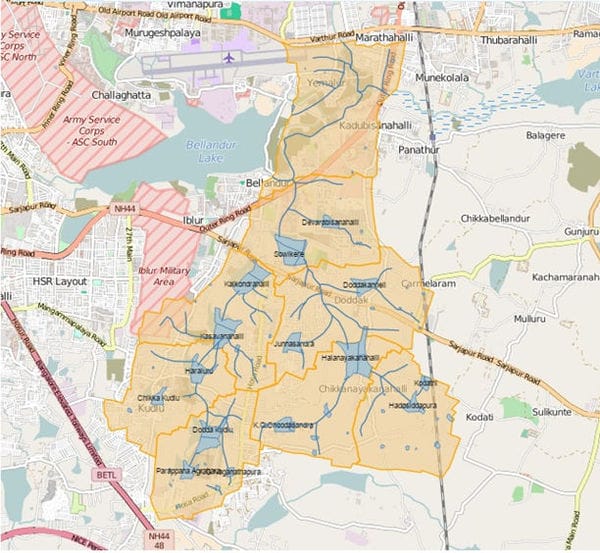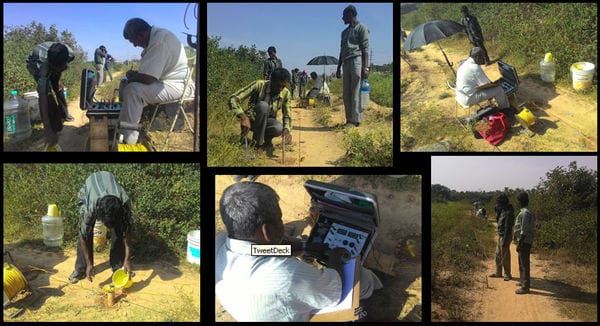
A map of the area under study. Pic: Biome
As part of the participatory aquifer management studies in the Yemalur watershed, we conducted a Vertical Electrical Sounding (VES) survey to get a clear geological profile of the ground below. A description of the activities is given below.
Objective
The VES or Resistivity Survey is a non-destructive in-situ test which is conducted by measuring variations in the electrical resistivity of the ground in order to to locate and estimate the characteristics of the aquifer below.
Methodology
The survey is done by applying small electric currents across arrays of ground electrodes (depth of penetration of the electrodes is about 4-6 inches) while measuring variations in the electrical resistivity of the ground. The data is processed to produce a depth profile of the thickness and resistivity of subsurface electrical layers.The method is used to identify groundwater yielding zones, their structure, direction of groundwater movement and any variation in quality within them.

VES testing in progress. Pic: Biome
There are challenges in identifying suitable locations (which are called arrays) to perform these tests. An array is set of observation ponits that have to be in a straight line about 700m long, far from any electrical lines, with unhindered access (no trafiic !!) to the team performing the tests – for a duration of about 2 hours. The challenges in identifying such locations were many as the only near straight stretches that we got were either along lake bunds or along roads.
Read through this presentation to understand the details of what was attempted. The results of these tests are still to be interpreted.
https://www.documentcloud.org/documents/2764694-Yemalur-Watershed-VES-Studies-Feb-2016.html